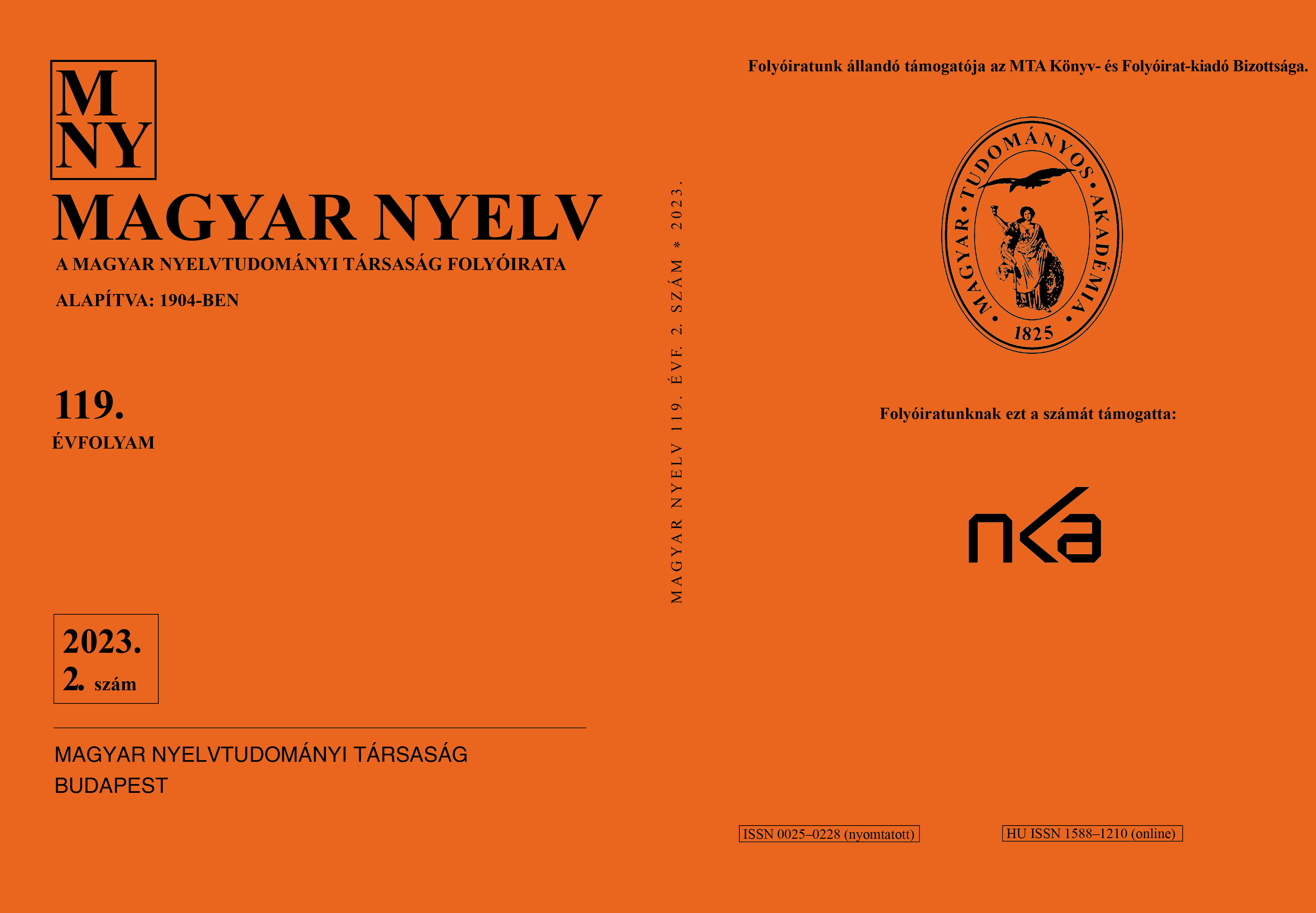Glosses on the history of a Rovash alphabet from Oxford
DOI:
https://doi.org/10.18349/MagyarNyelv.2023.2.251Keywords:
runic writing, Oxford, Harsányi Nagy, Marshall, HickesAbstract
This study discusses a newly discovered (by William Poole of New College) manuscript in the archives of Lincoln College, Oxford. It was found glued into a book by Thomas Marshall and its author was Jakab Harsanyi Nagy, a Brandenburg diplomat, who jotted down an alphabet in Hungarian Sekler runic writing, most likely in 1678. According to the author this could have been the basis for the runic alphabet printed in the book of another Oxford scholar, George Hickes, in 1703–1705.
Downloads
Published
Issue
Section
License
Copyright (c) 2023 György Gömöri

This work is licensed under a Creative Commons Attribution-NonCommercial-NoDerivatives 4.0 International License.
Magyar Nyelv is a Diamond Open Access periodical. Documents can be freely downloaded and duplicated in an electronic format, and can be used unchanged and with due reference to the original source. Such use must not serve commercial purposes. In the case of any form of dissemination and use, Hungarian Copyright Act LXXVI/1999 and related laws are to be observed. The electronic version of the journal is subject to the regulations of CC BY-NC-ND (Creative Commons – Attribution-NonCommercial-NoDerivatives).
The journal permits its authors, at no cost and without any temporal limitation, to make pre-print copies of their manuscripts publicly available via email or in their own homepage or that of their institution, or in either closed or free-for-all repositories of their institutions/universities, or other non-profit websites, in the form accepted by the journal editor for publication and even containing amendments on the basis of reviewers’ comments. When the authors publicize their papers in this manner, they have to warn their readers that the manuscript at hand is not the final published version of the work. Once the paper has been published in a printed or online form, the authors are allowed (and advised) to use that (post-print) version for the above purposes. In that case, they have to indicate the exact location and other data of the journal publication. The authors retain the copyright of their papers; however, in the case of an occasional secondary publication, the bibliographical data of the first publication have to be included.



